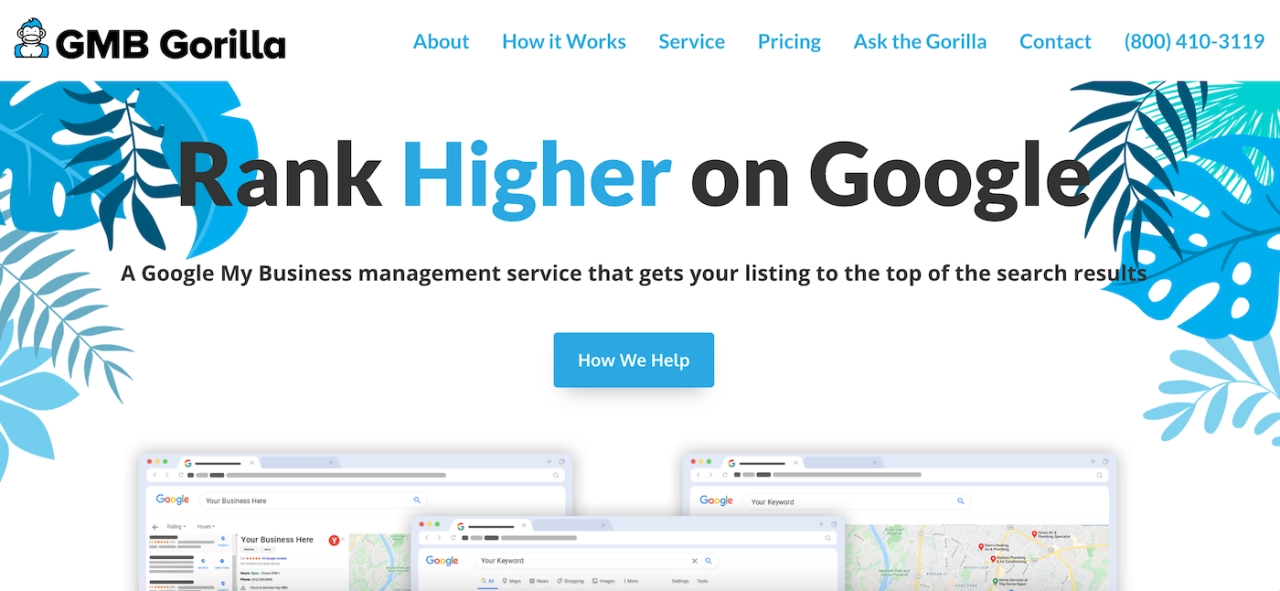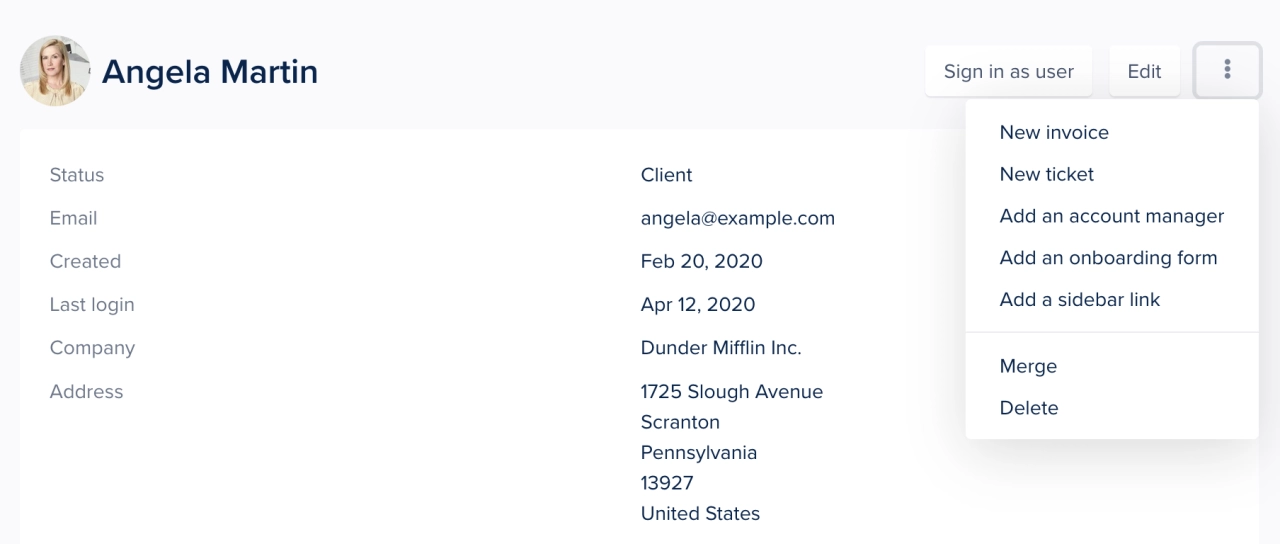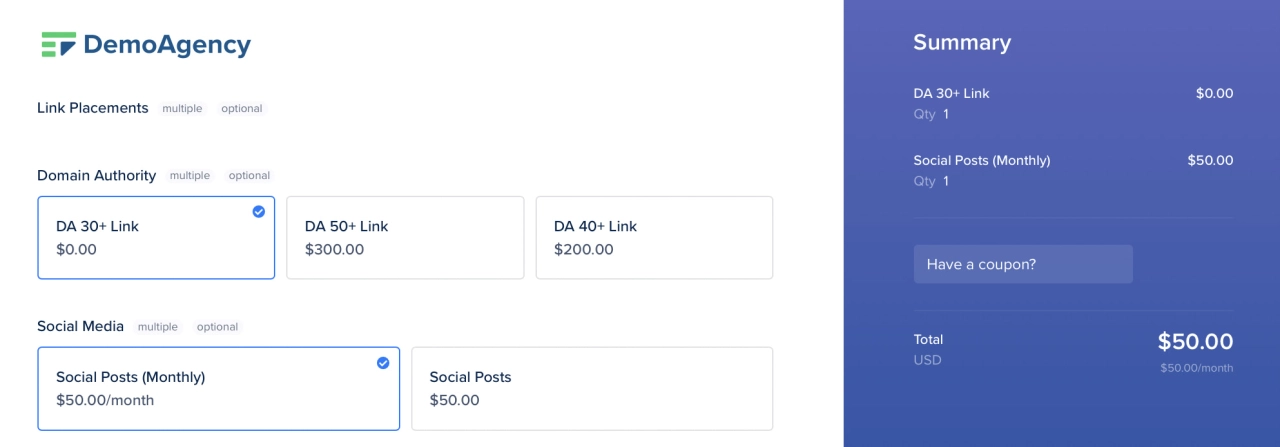- Sustainable agency growth requires understanding that growth is not always linear and setting organized KPIs specific to the agency’s goals.
- Strategies to grow include building an integrated software stack, improving client onboarding, focusing on upsells and cross-sells, and utilizing content marketing effectively.
- Agencies should optimize internal operations, diversify offerings, maintain a client-centric approach, and leverage marketing for generating new leads to achieve growth.
Once you’ve successfully started your digital marketing agency, and everything looks to be running smoothly, you’ll be thinking of growing your company. You’re most likely not interested in experimenting too much, after all, time is money—and you don’t want to waste either of them.
One thing you’ll quickly realize is that digital marketing agency growth tends to come in phases. You add more services to your offering, you get more clients, but start struggling keeping up with deadlines. Did you spread yourself too thin? And what about those periods when your agency seems to stagnate?
All of this is normal because growth is not always linear. There are strong period of growth, some stagnation, maybe some losses—and all of this is normal. To better understand them, and most importantly, be prepared for them, read this guide including actional tips and best practices to grow your digital agency.
How can a digital marketing agency grow?
Growth is a term that gets thrown around a lot in business circles. A lot of people have a vague sense of what it means, but struggle to get specific. And there’s a reason for that. Growth can refer to an increase in any metrics that are important to your business, including (but not limited to):
net revenue
monthly recurring revenue (MRR)
sales
profit margin
number of employees
number of customers
output
An agency that increases its MRR is experiencing growth. The same can be said for an agency that increases its net profits. This gets complicated when you realize it’s possible to increase MRR without increasing net profits.
Does the example above qualify as growth?
Well, that’s up to you.
Every agency has different goals, which means that what counts as growth will vary from one agency to the next. That’s why your agency needs to have an organizational definition of growth (complete with metrics and agency KPIs) to work with.
Common agency growth strategies
I’ll get to the specific tips in a minute, but I first need to talk about growth strategies. The tips below are all tactics you can use to achieve sustainable growth, but they need to be employed as part of a broader strategy.
There are four of the most common (and effective) agency growth strategies.
1. Optimization
This strategy is all about streamlining your internal processes and making the most of your existing resources. The goal is to increase efficiency and productivity, so that you can maintain your current levels of output with fewer resources. This frees up time and money that can be reinvested in other growth initiatives.
2. Diversification
Diversification is about expanding your agency’s offerings to include new services and products. This could mean anything from adding new service packages to your existing clients to developing an entirely new offering for a new market.
The goal of diversification is to create new revenue streams and reduce your dependence on any one particular client or service.
3. Client-centricity
A lot of agencies get caught in the trap of chasing new clients at the expense of their existing ones. This is a mistake.
Client-centric growth is all about giving your existing clients the attention they deserve, so that they stick around. The goal of client-centric growth is to increase customer lifetime value (LTV) by providing an exceptional level of service.
4. Marketing
This one should be obvious, but it’s worth mentioning anyway. Marketing is all about generating new leads and converting them into paying clients.
You do this already, but you’re almost certainly not taking advantage of all the channels and tactics available to you. There are a lot of low-hanging fruit when it comes to marketing, so this is an area where you can really ramp up your growth efforts with minimal investment.
Now that you know the four most common agency growth strategies, let’s talk about how to put them into action…
7 future proof tips for growing a digital marketing agency
There are tons of ways to grow your agency, but the challenge is that many of them are outdated. It’s not 2004 anymore, and the agency landscape is constantly changing. There many more competitors you’ll have to keep in mind, but also technologies are evolving. If you don’t make use of them as an agency owner, you’ll struggle to compete.
Let’s look at strategies a successful digital marketing agency should use to grow.
1. Build a software stack that works as a unit
The quality of your tools can dictate your agency’s productivity. That means choosing the right tools is one of the best things you can do to optimize your agency.
Think about it this way. If your team is using a patchwork of tools, they’re wasting time trying to piece everything together. If you have a software stack that works as a unit, you increase productivity.
There are two key factors to look into when searching for tools that work well together, namely integrations and automations.
I know that successful agencies are using an abundance of tools. They are
running marketing campaigns and need to share marketing reports with their clients
doing lead generation and want to easily convert them to clients
post to social media platforms to spread the word about their services
It’s crucial to send the data into a single tool in order to have a single source of truth.
Let’s assume that you rely heavily on email marketing. In order to grow your digital marketing agency in 2024, you want to slowly nurture your leads with targeted email marketing campaigns.
When you integrate SPP and Mailchimp or ActiveCampaign, new clients can automatically be added to different mailing lists based on the services they order. This saves you the hassle of manually adding them yourself.
2. Niche down your services
In the beginning of your agency journey, you might have chosen many different digital marketing services. After a year of being active, you can see a trend. Some sell better than others, some you can automate easily, some are not making much money.
If you decide to niche down, you can focus on what brings in money, ensure your agency is actually successful, and stop looking for new business constantly. Instead, you can grow your operations and invest in optimizing them—especially your team and processes.

A great example is GMB Gorilla, a Google My Business optimization agency that hasn’t changed much since I interviewed them for our case study.
They know what works well for them, namely:
a one-time Google Business Profile setup service
a one-time GBP optimization service
a recurring GBP management service

SPP.co has been a key ingredient in our winning recipe for a successful productized service. It's easy for staff to use and customers love the client portal software for managing their service account.Watch the case study →

Some of those services include upsells to maximze the revenue on each client.
3. Develop a great onboarding process
As a small business that is in its growing phase, you don’t have time to manually onboard each client. Does it look nice and personal? Sure, but you don’t have time for it unless it’s a very big client bringing in major revenue. For those, you can assign an account manager in SPP that gives them all their attention.

For everyone else, build a process that takes time off your team’s hands.
Great client onboarding should do three things:
Orient the client: You need to give them an overview of your agency, what you do, and how you work.
Set expectations: You need to let clients know what they can expect from working with you, from the quality of your work to the frequency of communication.
Get feedback: You need to find out what their specific needs and goals are, so that you can tailor your services to them.
I also recommend to develop a very good onboarding process for new clients. They often struggle to make use of new software, don’t understand how your agency works, and need a guiding hand.
4. Prioritize upsells and cross-sells
Upselling and cross-selling are both win-win growth tactics that increase revenue while simultaneously serving clients better.

Upselling means selling clients higher-tier services than the ones they’ve already purchased (e.g., upgrading their plan). Cross-selling means selling them services that are related to the ones they’ve already purchased (e.g., adding PPC to their existing SEO package).
The SPP client portal makes it easy to prioritize upsells and cross-sells. With the client portal, your clients are able to browse your services and add additional services to their order at checkout.
5. Find an agency partner
Diversification can be an effective growth strategy, but it’s hard to execute.
By partnering with another agency, you can quickly and easily expand your service offering without having to invest in training or hiring new team members. You can also tap into their existing client base, which can help you to grow your own clientele.

Of course, it’s important that you choose the right partner. You can check out SPP’s guide to agency partnerships to learn how.
6. Make use of content marketing
If you’ve built an agency website that isn’t much more than a landing page, it’s time to build out the content side of it. Content marketing allows you to grow your agency by letting clients find you via search engines.
To be successful in building your online presence, keep the following things in mind:
Develop your content strategy: Think about what your content strategy goal is. Do you want to funnel traffic to your website, increase brand awareness, or generate leads?
Create authoritive content: Build your brand with authority content marketing by becoming a thought-leader in your niche. Everyone should know that you’re the best source of truth for this niche.
Optimize for user experience: Don’t just write for Google, but put yourself in the shoes of your target audience. What are they looking for, and how can you give them an answer to their question?
Measure and refine: Track the performance of your content and see what works best. Are some posts not ranking in the top 10? Maybe you lack topical authority, internal links, or you’re not hitting the search intent.
Lastly, think about leveraging other channels such as video marketing and social media. If social media marketing is one of the services you offer, why not use those skills to your own advantage?
7. Learn to refuse work
Many agency owners are bad at refusing work. Saying no seems rude and counter-intuitive. Why would anyone refuse work?
There are many good reasons to do so, and the biggest of them is that new projects are not necessarily a good time investment for you. What if the project costs you more money than it makes? Is it a project that is hard to figure out the price for? Do you lack the necessary marketing experts to fulfill the customer’s order?
All those things point to a clear answer: you should refuse the work. Or better, refer your client to a partner agency. There are many white label programs you can use to avoid saying no but also not having to do the work yourself.
8. Optimize your website for conversion
If you’re just banking on your social media presence and content marketing efforts to magically convert leads, you’ll quickly learn that it’s not that easy. Those channels bring in traffic, yes, but converting it is still part of your job.

Use tools such as Hotjar to better understand user behaviour. They’ll help you understand where visitors are clicking, how they spend their time, and if you need to improve the website copy or click-to-actions.
You can also build landing pages for different services that are optimized for conversion, for instance create a nicely designed page showcasing the ten best agency websites. Reach out to the featured agencies and ask them for a link to your page, or to promote you on their social media channels.
Frequently asked questions
How do I market my digital marketing agency?
Growing agencies can rely on a mix of content marketing, agency referral programs, paid ads, and cold email outreach.
How do I make my digital marketing agency stand out?
Focusing on a specific market or category can help agencies establish themselves as a market leader. It will be easier to built trust, set up the agency services, and market them.
How does a digital marketing agency get clients?
Referrals are a good way to get clients in the growing stage. Ask your customers to refer you, and offer incentives such as free services or discounts.
Take your digital marketing agency to the next level
At this point, you should have a better idea of what it means to grow an agency. You know that you need to define your own growth, optimize processes, and invest in your team and tools. And next? You can think how to scale your digital agency so it becomes even more profitable.











